Hay, Breconshire
Up to 1834
No information.
After 1834
Hay Poor Law Union was formed on 26th September, 1836. Its operation was overseen by an elected Board of Guardians, 27 in number, representing its 25 constituent parishes as listed below (figures in brackets indicate numbers of Guardians if more than one):
County of Brecon:
Aberllynfy; Bronllys; Glynfach, or Capel-y-ffin; Hay (2); Llanelieu; Llanigon; Llyswen; Pipton; Talgarth, including the Hamlets of Borough, Forest, Trefecca and Pwll-y-wrach (2); Tregoyd & Velindre.
County of Hereford:
Bredwardine; Clifford; Cusop; Dorston; Whitney.
County of Radnor:
Bettws Clyro; Boughrood; Bryngwyn; Clyro; Glasbury; Llanbedr-Painscastle; Llandeilo Graban; Llanstephan; Llowes.
The population falling within the union at the 1831 census had been 11,403 with parishes ranging in size from Glynfach, or Capel-y-ffin (population 67) to Hay itself (1,959). The average annual poor-rate expenditure for the period 1834-36 had been £5,492 or 9s.8d. per head.
A Hay Union workhouse was erected in 1837 on a four-acre site the south side of St Mary's Road at west of Hay on Wye. The Poor Law Commissioners authorised an expenditure of £3,200 on construction of the building which was to accommodate 110 inmates. Designed by George Wilkinson, is adopted the popular cruciform or "square" layout with accommodation wings for the various categories of inmate (male/female, infirm/able-bodied) radiating from a central supervisory hub.
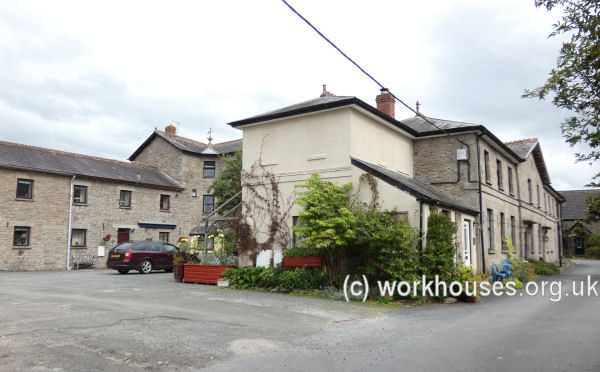
Hay former workhouse from the north-west, 2020.
© Peter Higginbotham.
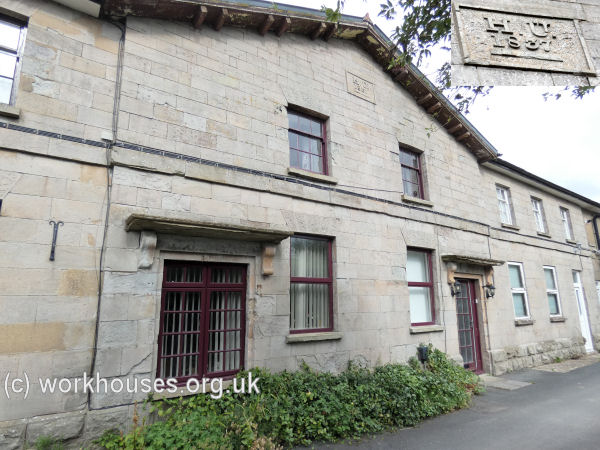
Hay former workhouse entrance block, 2020.
© Peter Higginbotham.
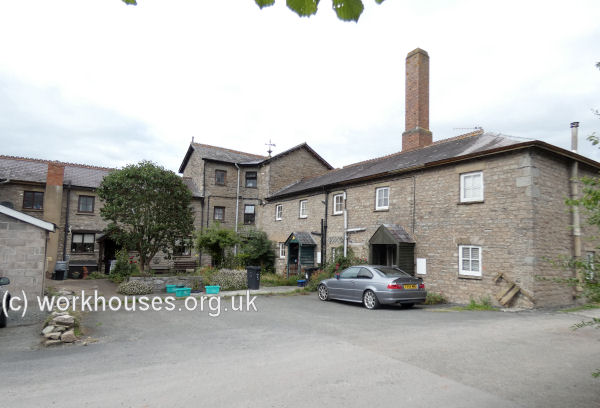
Hay former workhouse from the south-east, 2020.
© Peter Higginbotham.
By 1866, the Guardians had erected a detached infirmary at the south-east of teh workhouse, rated as 'pretty good' by a government inspector, while the original infirmary at the back of the workhouse was being used as foul wards for venereal cases. In 1897, new casual wards were erected at the north of the site to a design by Cardiff architect J.H. Phillips. The workhouse location and layout are shown on the 1905 map below.
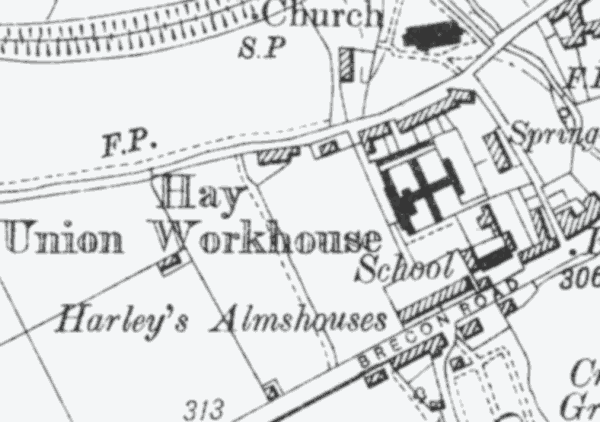
Hay workhouse site, 1905.
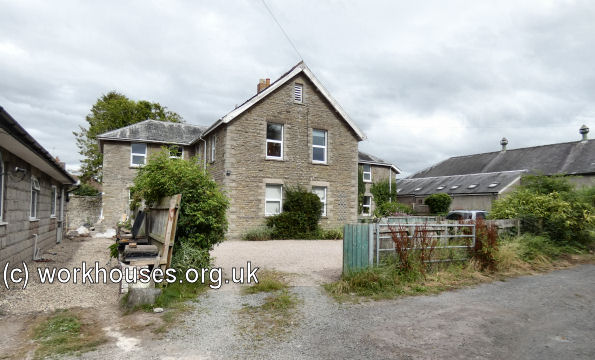
Hay former workhouse infirmary(?) from the west, 2020.
© Peter Higginbotham.
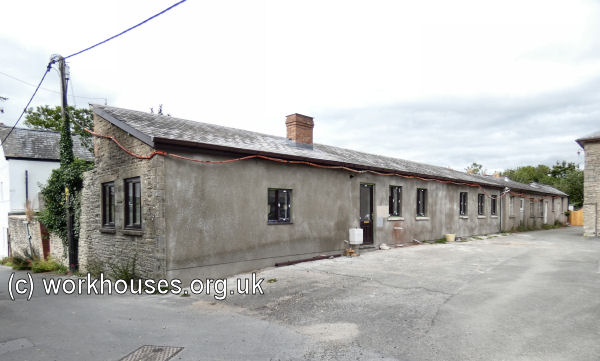
Hay former workhouse casual ward block from the south-east, 2020.
© Peter Higginbotham.
After 1904, for birth registration purposes, the address of the workhouse was recorded as '7 St Mary's Road'.
After 1930, the former workhouse became a Public Assistance Institution.
The surviving workhouse buildings have now been converted for residential use and known as Frank Lewis House.
Staff
Inmates
Records
Note: many repositories impose a closure period of up to 100 years for records identifying individuals. Before travelling a long distance, always check that the records you want to consult will be available.
- Powys County Archives Office, Unit 29, Ddole Road Enterprise Park, Llandrindod, LD1 6DF. Few records survive — holdings include: Admissions and discharges (1909-32); Births (1914-48); Deaths (1914-64); Register of inmates (1916-54); Creed register (1903-26); etc.
Bibliography
- Higginbotham, Peter The Workhouse Encyclopedia (2014, The History Press)
- NEW! Workhouses of Wales and the Welsh Borders. The story of the workhouse across the whole of Wales and the border counties of Cheshire, Gloucestershire, Herefordshire and Shropshire. More...
Links
Unless otherwise indicated, this page () is copyright Peter Higginbotham. Contents may not be reproduced without permission.


